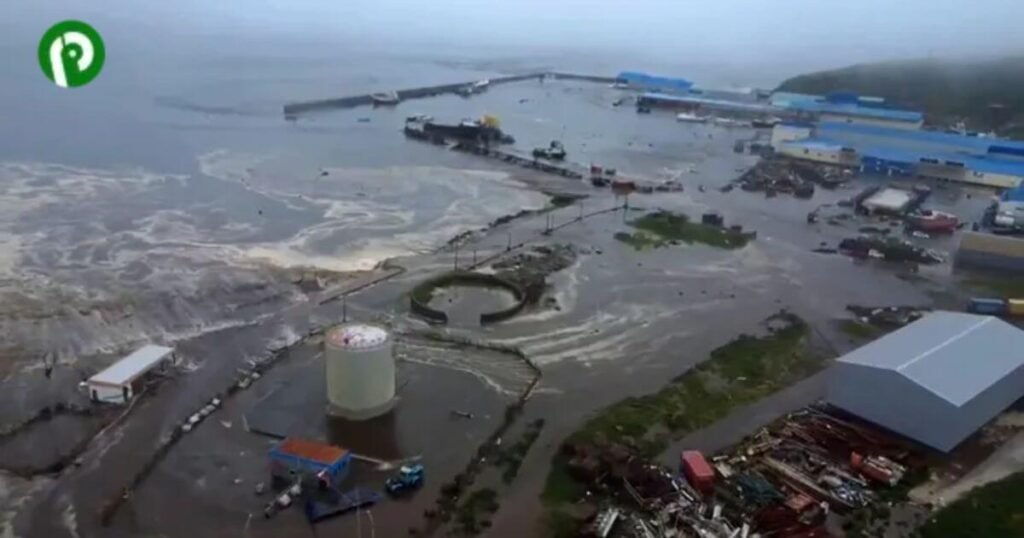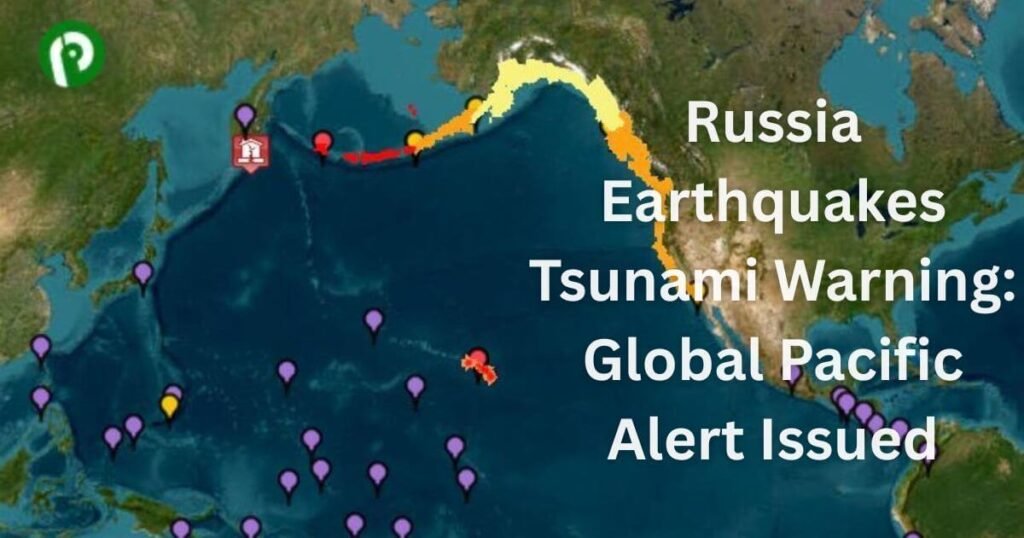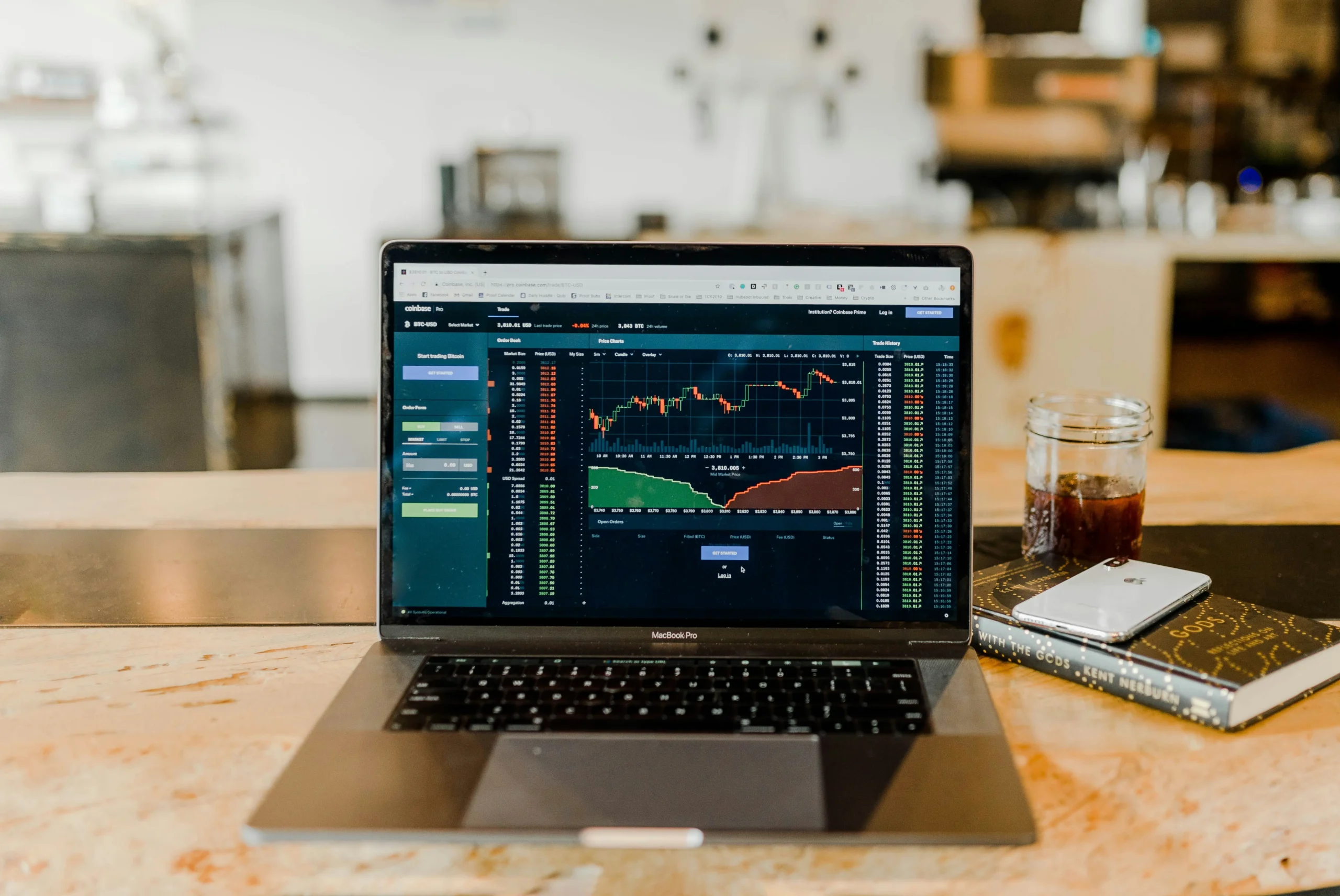A massive magnitude 8.8 quake struck off Russia’s Kamchatka Peninsula on July 30, 2025, triggering a tsunami warning after Kamchatka earthquake that swept across the Pacific. This Kamchatka seismic event ranks among the strongest since 1952, prompting Pacific tsunami alerts across Japan, the U.S., and other coastlines. In Russia, tsunami waves hit Russia’s Severo Kurilsk, reaching heights of three to four meters and causing significant Severo Kurilsk flooding in coastal zones.
Japanese and American authorities responded swiftly with evacuation orders in Japan Hawaii, and coastal residents were urged to move inland. Global systems remained on high alert as aftershocks recorded continued, keeping communities vigilant. For more latest news checkout, Pakistan coverage.
Kamchatka Quake
A magnitude 8.8 quake struck off Russia’s Kamchatka Peninsula on July 30, 2025, triggering a tsunami warning after Kamchatka earthquake for nations around the Pacific. The epicenter lay about 120 km east‑southeast of Petropavlovsk‑Kamchatsky, at only ~19 km depth. This Kamchatka seismic event ranks as the strongest quake in Kamchatka since 1952, classed as the sixth‑largest globally. People felt violent shaking across Far East Russia, as initial readings were revised from 8.0 to 8.8.
In Russia’s Kuril Islands and Severo‑Kurilsk area, tsunami waves hit Russia’s Severo Kurilsk with heights reaching 4 to 5 meters. Major flooding occurred in port zones, damaging infrastructure including a kindergarten and disrupting power. Regional officials confirmed injuries but no fatalities. The Severo Kurilsk flooding caused evacuations and local emergency response activation.
Tsunami Impacts
Japan saw immediate effects: tsunami waves height around 60 cm on Hokkaido’s coast, though officials warned of possible 3 meter surges. The Japan issues tsunami advisory after earthquake quickly escalated to full evacuation orders. Over 900,000 residents across 133 municipalities were ordered to higher ground. The Fukushima plant staff were moved inland as a precaution.
In Hawaii, initial tsunami waves measured about 4 feet (≈1.2 m) at Hilo and Kahului, with evolving alerts urging residents inland. Hawaii tsunami risk after Russian quake remains elevated for hours. First waves arrived around dusk local time, but officials emphasized this was only the start. Coastal flooding occurred in low-lying zones, and evacuation shelters opened across islands.
Far Flung Warnings
Pacific‑wide alerts spanned nations including Japan, the US West Coast, Alaska, Hawaii, Taiwan, Philippines, Ecuador, Chile, New Zealand and more. The Pacific tsunami alerts US Japan Russia ecosystem activated swiftly, with watches and warnings issued broadly. The National Tsunami Warning Center and U.S. Geological Survey played key roles in alerting the public.
Residents from California to British Columbia were told to avoid beaches and marinas. Pacific-wide tsunami warnings after quake extended across much of the American coastline. Authorities reminded communities that tsunamis aren’t single pulses but cascading waves over many hours. Many regions remained on watch into the next day due to prolonged risk. Read our latest blog posts and insights, click here.
Japan Response

Japanese authorities reacted with urgency. Japan evacuation orders covered nearly two million people in coastal prefectures. Officials predicted waves up to three meters and urged immediate retreat from the shoreline. Transport systems paused, and local authorities set up shelters inland.
TEPCO evacuated workers from the Fukushima plant precautions zone. Past nuclear disaster fears drove caution, though no irregularities were observed at nuclear facilities. Residents sheltered in high ground and secured homes. The quick action suggests Japan remains highly prepared.
US Precautions
In the United States, authorities reacted quickly. The National Weather Service issued tsunami advisories and warnings covering California, Oregon, Washington, Alaska and Hawaii after the Pacific tsunami alerts triggered. Evacuation orders in Japan Hawaii inspired similar emergency actions in U.S. Pacific states. Road traffic in Honolulu stalled as people headed inland.
Officials issued public warnings: stay out of oceans and harbors, leave beaches, and suspend fishing and boating. Coastal communities were told the Hawaii and West Coast warnings could remain in effect for over a day. Emergency systems posted alerts and hourly updates. Explore top world stories and global updates, click here.
Historical Context
The Kuril‑Kamchatka trench lies along a major seismic zone. History reveals devastating events: in 1952 a magnitude 9.0 quake triggered an 18 m tsunami, killing over 2,300 people in Severo‑Kurilsk. That remains one of the most destructive in Russian history.
Earlier megathrust quakes occurred in 1737 and 1841, generating waves of 15–60 m that reached as far as Hawaii. The 1923 events also produced enormous aftershocks recorded and waves recorded across the Pacific. Those precedents illustrate the recurring tsunami threat lasting another day Japan and across the ocean following major seismic events.
Aftershock Risk
Seismic scientists warn that strong aftershocks recorded up to magnitude 7.5 are likely in coming days. These tremors can also trigger tsunami pulses. Russian scientists advised residents to remain cautious and avoid coastal zones until seafloor behavior stabilizes.
Communities from Russia to California are being urged to monitor updates closely, maintain awareness for tsunami threat lasting another day in Japan and along U.S. coasts, and follow official guidance. Emergency agencies stressed preparedness kits, evacuation routes and staying clear of streaming water. To Stay updated with the latest weather news, click here.
Aftershock Outlook and Advice
The Russia Earthquakes Tsunami Warning remains active as agencies monitor seismic activity. Strong aftershocks could follow for days, reinforcing the aftershock risk. Coastal residents should heed guidance: evacuate when told, avoid shorelines, and keep emergency kits ready. Stay updated through trusted agencies and don’t ignore rising water or sirens. In the U.S., Japan or elsewhere, responsible reactions now can save lives tomorrow.
Frequently Asked Questions (FAQs)
Did the Russia earthquake cause a tsunami?
Yes. A magnitude 8.8 quake off Kamchatka triggered an ocean tsunami that sent waves up to five meters crashing into Severo‑Kurilsk and reached coasts across Japan and the Pacific.
Did an 8.7 earthquake hit Russia?
Initially, seismic agencies reported the quake as magnitude 8.7, but this was later updated to magnitude 8.8, making it the strongest quake in Kamchatka since 1952.
Which country has the best tsunami warning system?
The United States and Japan are among the most advanced globally, supported by systems like the Pacific Tsunami Warning Center, while countries like India, Chile and Australia also lead in early warning technology.
When was Russia’s last earthquake?
Russia’s last major quake before the July 2025 event occurred in 1963 (magnitude 8.5 in the Kuril Islands), and previously in 1952 (magnitude 9.0 Severo‑Kurilsk tsunami).
What caused the biggest tsunami in history?
The largest known tsunami resulted from a megathrust earthquake—estimated magnitude 9.0–9.3 in Kamchatka in 1737, producing waves up to 60 meters tall.








